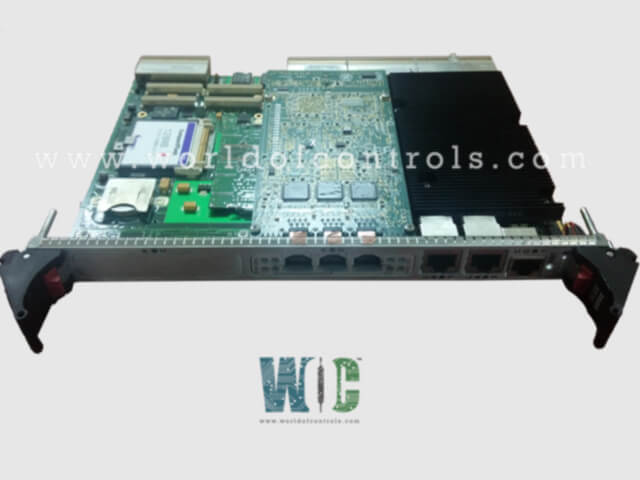
World Of Controls understands the criticality of your requirement and works towards reducing the lead time as much as possible.
IS215UCCCM06A - CPCI Controller Board is available in stock which ships the same day.
IS215UCCCM06A - CPCI Controller Board comes in UNUSED as well as REBUILT condition.
To avail our best deals for IS215UCCCM06A - CPCI Controller Board, contact us and we will get back to you within 24 hours.
Part No.: IS215UCCCM06A
Manufacturer: General Electric
Country of Manufacture: United States of America (USA)
Microprocessor: Intel Pentium M processor
DRAM: 32 MB
Compact Flash Module: 128 MB
Advanced Transfer Cache: 256 KB
Product Type: CPCI controller board
Availability: In Stock
Series: Mark VIe
IS215UCCCM06A is a CPCI controller board developed by GE. It is a part of the Mark VIe control system. It is a comprehensive module assembly that includes the UCCCH controller board, augmented with additional memory, and an expansion module for enhanced functionality. UCCCH is a compact, single-slot CompactPCI (CPCI) controller board designed for high-performance computing tasks.
The WOC team is always available to help you with your Mark VIe requirements. For more information, please contact WOC.
What is IS215UCCCM06A?
It is a CPCI controller board developed by GE under the Mark VIe series.
What is the purpose of the EGD protocol in these modules?
The Ethernet Global Data (EGD) protocol is used for application variable communication with CIMPLICITY HMI systems and Series 90-70 PLCs, facilitating real-time data exchange and synchronization.
Can these modules communicate with third-party Distributed Control Systems (DCS)? If so, which protocol is used?
Yes, it can communicate with third-party Distributed Control Systems (DCS) using the Ethernet Modbus protocol. This enables interoperability with a variety of industrial devices and systems.
Why are multiple communication protocols supported by these Ethernet interfaces?
Supporting multiple communication protocols (TCP/IP, EGD, Ethernet Modbus) ensures versatile and reliable networking capabilities, allowing the modules to integrate seamlessly with a wide range of devices and systems. This enhances overall system performance and flexibility.